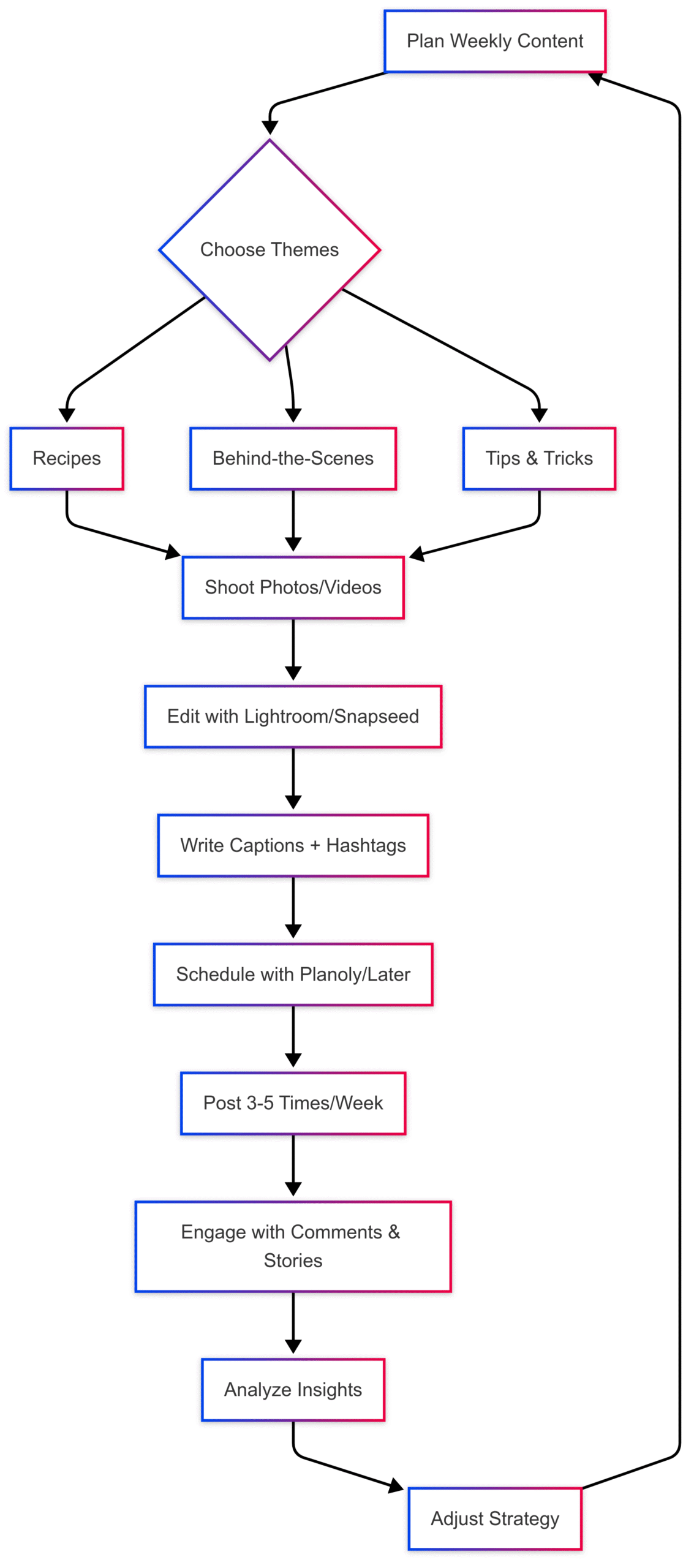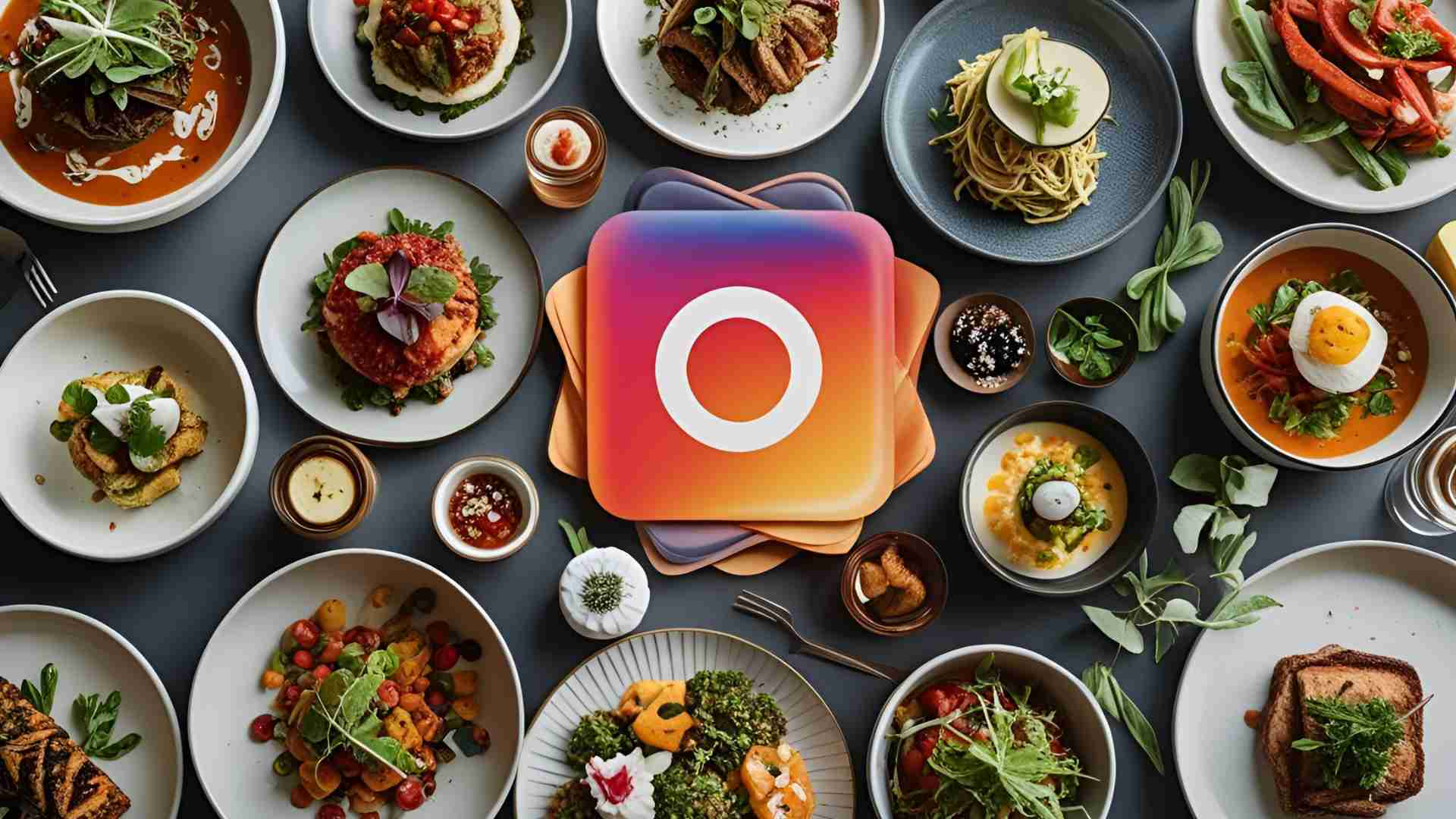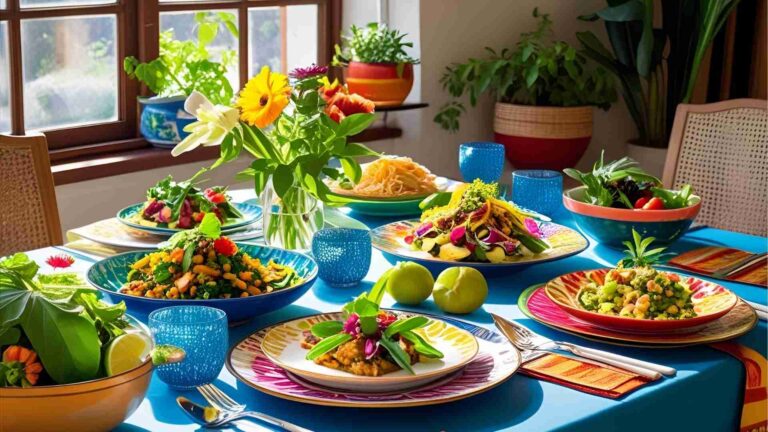How to Promote Your Food Blog on Instagram
Learn how to promote your food blog on Instagram with high-quality visuals, consistent posting, hashtags, and strategic collaborations to boost engagement and drive traffic.
Instagram, with over 2 billion monthly active users, is a powerhouse for food bloggers aiming to grow their audience and drive traffic to their blogs. Its visually-driven platform is perfect for showcasing mouthwatering dishes, but success requires more than just posting pretty pictures. This guide provides a detailed, actionable strategy to promote your food blog on Instagram, drawing from proven tactics, expert advice, and real-world examples. Whether you’re a beginner like the user behind the “bingethis” Instagram account or a seasoned blogger, these strategies will help you build a thriving community and boost your blog’s visibility.
Why Instagram Matters for Food Bloggers
Instagram is uniquely suited for food bloggers due to its emphasis on visuals and engagement. Unlike platforms like Twitter, where links drive direct traffic, Instagram prioritizes brand-building and audience connection. A study by Waitrose found that one in five people share food photos monthly, reflecting the platform’s influence on food culture. The Guardian also noted a shift toward “Instagram-worthy” foods, like avocado toast, highlighting the platform’s role in shaping dining trends. For food bloggers, Instagram offers:
- Brand Awareness: Stunning visuals and engaging captions establish your unique voice and aesthetic.
- Audience Engagement: Interactive features like Stories and polls foster a loyal community.
- Cross-Promotion Opportunities: Collaborations with brands and bloggers expand your reach.
However, Instagram’s algorithm and link limitations mean you need a strategic approach to convert followers into blog visitors. Below, we dive into the key strategies to make your food blog shine on Instagram.
1. Master High-Quality Visuals
The cornerstone of Instagram success is high-quality, appetizing visuals. Food photography is a competitive space, and professional-looking images set you apart. Here’s how to elevate your visuals:
Invest in Photography Skills
Your photos are your first impression. Poor lighting or composition can deter potential followers, as noted by user danielbearh in a Reddit thread, who emphasized that photo quality “separates the big accounts from the little accounts.” To improve:
- Lighting: Use natural light whenever possible. Shoot near windows or outdoors during golden hour (early morning or late afternoon) for soft, flattering light.
- Composition: Follow the rule of thirds, placing key elements off-center for visual interest. Use props like utensils or napkins to add context without cluttering the frame.
- Editing: Tools like Adobe Lightroom or Photoshop (available for $10/month in Adobe’s Photography Plan) can enhance colors and sharpness. Free alternatives like Snapseed or VSCO are also effective. Watch YouTube tutorials to master basic editing techniques, such as adjusting exposure or contrast.
Recommended Resources
- Books: Plate to Pixel by Hélène Dujardin offers practical food photography tips, though its price has risen to around $73. Alternatives like Food Photography: From Snapshots to Great Shots by Nicole S. Young are more affordable (~$25).
- Online Courses: Platforms like Lynda.com (now LinkedIn Learning) offer food photography tutorials for beginners.
- Equipment: A smartphone with a good camera (e.g., iPhone 14 or Google Pixel 8, starting at ~$699) is sufficient for beginners. For advanced setups, consider a DSLR like the Canon EOS Rebel T7 (~$479) with a 50mm lens (~$125).
Example
Successful food blogger @cookingclassy uses vibrant, well-lit photos with clean backgrounds to showcase recipes like cakes and pasta. Their images consistently feature bright colors and minimal distractions, making dishes pop.
2. Post Consistently and Strategically
Consistency builds trust and keeps your audience engaged. A sporadic posting schedule can cause followers to lose interest, while regular posts signal reliability.
Create a Posting Schedule
Aim for 3–5 posts per week, as suggested by DaviesMediaDesign in the Reddit thread, who recommended posting multiple times daily for three months to see results. Use tools like:
- Planoly: Plan and schedule posts, track hashtags, and analyze performance (~$9/month for the Starter plan).
- Later: Offers similar features with a free tier for basic scheduling.
Timing Matters
Post when your audience is most active. Instagram Insights (available for business accounts) shows peak engagement times. Generally, posting between 10 AM–2 PM or 7 PM–9 PM local time maximizes visibility.
Content Themes
Focus on 2–3 core themes to create a cohesive feed, as advised by NikOnDemand. For example, your “bingethis” account could center on:
- Quick recipes for busy professionals
- Exotic ingredients (e.g., dragon fruit, matcha)
- Dessert-focused content
This focus helps attract a dedicated audience. For instance, @topwithcinnamon (211k followers) is known for stunning dessert photography, creating a recognizable brand.
3. Engage Your Audience Actively
Engagement is the heart of Instagram’s algorithm. The more likes, comments, and saves your posts receive, the more likely they are to appear in followers’ feeds and the Explore page.
Respond to Comments
Reply to comments promptly to show appreciation and encourage further interaction. Ask open-ended questions in captions, like “What’s your favorite dessert to bake?” to spark conversations.
Use Interactive Stories
Instagram Stories are a powerful engagement tool. Features like polls, quizzes, and question stickers invite participation. For example, post a poll asking, “Sweet or savory breakfast?” to engage followers. Share behind-the-scenes content, like prepping a recipe, to build authenticity.
Build Community
Comment on other food bloggers’ posts and engage with their content. writingpaper advised liking and commenting on posts within your niche to grow organically. Follow accounts like @jennaleahhope, a health blogger with a dedicated following, to learn engagement tactics.
4. Leverage Hashtags Strategically
Hashtags are your gateway to reaching non-followers. They categorize your content, making it discoverable to users browsing specific topics.
Types of Hashtags
As demonstrated by @cookingclassy, use a mix of:
- Popular Hashtags: #foodie (70M+ posts), #foodphotography (40M+ posts). These have high competition but broad reach.
- Niche Hashtags: #foodblogeats, #tastingtable. These target specific communities with less saturation.
- Branded Hashtags: Create a unique hashtag like #bingethisrecipes to encourage followers to share your content.
Best Practices
- Use 5–10 hashtags per post to avoid appearing spammy. Instagram allows up to 30, but DaviesMediaDesign suggests restraint for better engagement.
- Store frequently used hashtags in a notes app or Planoly for easy access.
- Research competitors’ hashtags. Tools like Hashtagify (~$29/month) analyze hashtag performance.
Example Hashtag Strategy
For a matcha cream puff post:
#foodie #dessert #matchalovers #foodblogeats #bingethisrecipes5. Tag Relevant Accounts for Visibility
Tagging brands, bloggers, or local businesses increases your post’s visibility. For example, tag the brand of an ingredient (e.g., @driscollsberry for strawberries) or a restaurant you’re reviewing. Brands often reshare tagged content, exposing you to their followers.
Tips
- Be selective—only tag relevant accounts to maintain authenticity.
- Engage with tagged accounts by commenting on their posts to build relationships.
6. Collaborate for Growth
Collaborations amplify your reach by tapping into other creators’ audiences. DaviesMediaDesign highlighted co-marketing as a cost-effective strategy for small bloggers.
Types of Collaborations
- Blogger Partnerships: Partner with bloggers of similar size for shoutout exchanges. For example, if “bingethis” has 4 followers, find accounts with 100–500 followers for mutual promotion.
- Brand Partnerships: Reach out to small food brands (e.g., local bakeries or spice companies) for sponsored posts. Disclose partnerships transparently, as DaviesMediaDesign advised.
- Giveaways: Host a giveaway with another blogger, requiring participants to follow both accounts and visit your blog.
How to Start
- DM potential partners with a clear pitch: “Hi @localbakery, I love your sourdough! Want to collaborate on a recipe post to share with our followers?”
- Measure success using Instagram Insights to track follower growth and blog traffic.
7. Drive Traffic with Clickable Links
Instagram’s link limitations (no clickable links in captions) make strategic linking crucial. Use these methods to drive traffic to your blog:
Optimize Your Bio Link
Your bio is the only place for a clickable link. Use tools like:
- Linktree: Create a landing page with multiple links (~$6/month).
- Tap Bio: Similar to Linktree, with a free tier.
- Smart.Bio: Free, from Tailwind, ideal for linking to recent posts.
Update your bio link regularly to point to new blog posts or recipes. For example, @diethood links to specific recipes with clear CTAs like “Swipe up for the recipe!”
Use Stories for Swipe-Ups
If you have 10,000+ followers and a business account, the “swipe up” feature in Stories allows direct links. For smaller accounts, direct followers to your bio link with CTAs like “Link in bio for the full recipe!” Save Stories to Highlights for ongoing visibility.
Example CTA
Caption: “This matcha cream puff is melt-in-your-mouth delicious! 🍵 Get the recipe at the link in my bio.”
8. Craft Compelling Captions
Captions add personality and context to your posts. danielbearh advised making captions personal, sharing the story behind the dish. For example, instead of “Amazing dragon fruit smoothie,” write: “This dragon fruit smoothie is my go-to for a vibrant breakfast! The creamy texture and tropical flavor make it a winner. What’s your favorite smoothie combo?”
Tips
- Keep captions concise (150–300 characters) but engaging.
- Include a CTA: “Save this recipe for later!” or “Tag a friend who’d love this.”
- Share unique insights, like ingredient tips or cooking challenges.
9. Analyze and Adapt
Track your performance to refine your strategy. Instagram Insights provides data on:
- Engagement: Likes, comments, and saves.
- Reach: How many accounts see your posts.
- Follower Growth: Trends over time.
Experiment with post types (e.g., reels vs. carousels) and analyze what resonates. For example, reels often have higher reach due to Instagram’s algorithm favoring video content.
Sample Instagram Strategy Workflow
Below is a flowchart illustrating a weekly Instagram strategy for your food blog:

Budget-Friendly Tools and Costs
| Tool | Purpose | Cost |
|---|---|---|
| Adobe Lightroom | Photo editing | $10/month |
| Snapseed | Free photo editing | Free |
| Planoly | Scheduling & hashtag tracking | $9/month (Starter) |
| Linktree | Bio link management | $6/month |
| Canon EOS Rebel T7 | DSLR camera | ~$479 |
| Smartphone (e.g., iPhone 14) | Photography | ~$699 |
Overcoming Common Challenges
As a beginner with only 4 followers, like the “bingethis” account, you may face challenges:
- Low Engagement: Focus on quality over quantity. Engage with niche accounts and use targeted hashtags to attract your ideal audience.
- Photography Skills: Practice consistently and study successful accounts like @topwithcinnamon. Free tutorials on YouTube can bridge the gap.
- Time Management: Batch-create content (e.g., shoot multiple recipes in one session) to save time.
Case Studies
- @cookingclassy: With 242k followers, Jaclyn uses a mix of popular and niche hashtags, vibrant photos, and clear CTAs to drive blog traffic.
- @pinchofyum: Shares recipes in captions to boost engagement, saving links for strategic CTAs. Their Stories integrate behind-the-scenes content to cross-promote posts.
- @diethood: Katerina uses bio links and Stories effectively, directing followers to recipes with concise, actionable CTAs.
Final Thoughts
Promoting your food blog on Instagram requires a blend of creativity, consistency, and strategy. High-quality visuals, regular posting, and active engagement lay the foundation for growth. Strategic hashtags, collaborations, and clickable links turn followers into blog visitors. As DaviesMediaDesign noted, commit to three months of consistent effort to see results. With dedication and the right tools, your “bingethis” account can evolve from 4 followers to a thriving community, driving traffic to your food blog and establishing your brand in the competitive world of food blogging.
Please share these How to Promote Your Food Blog on Instagram with your friends and do a comment below about your feedback.
We will meet you on next article.
Until you can read, Ramen Noodles with Spicy Peanut Butter and Pork






